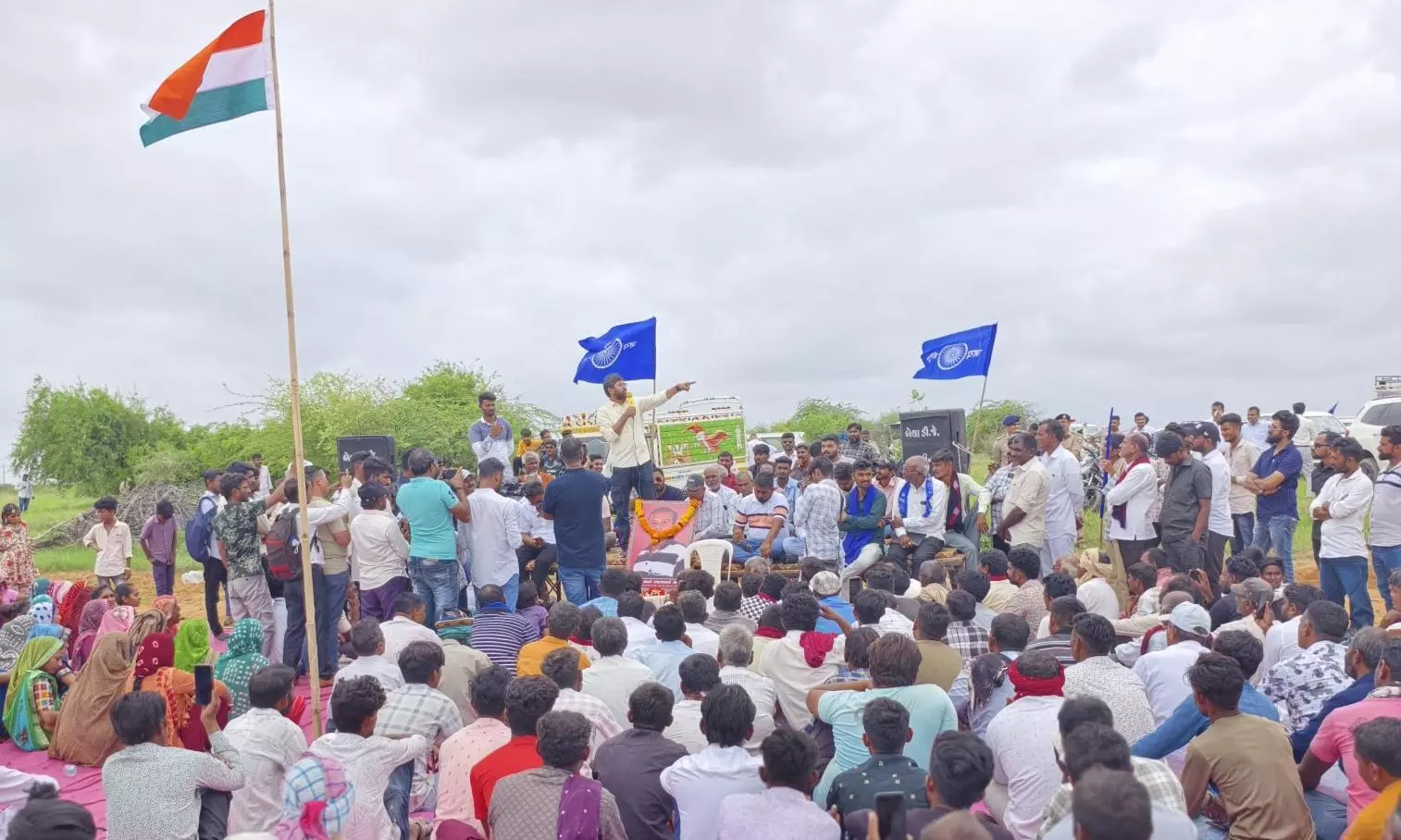
Dalits in Gujarat get land allotted to them after 41-year wait
Land was under illegal possession by upper-caste people, who used physical intimidation to keep rightful owners at bay; Jignesh Mevani's intervention helped the Dalits

After four long decades of disappointment, some Dalit families in Gujarat have finally got possession of land they were gifted a long time back but which the upper castes had illegally taken over.
Between 1960 and 1990, a total of 56,873 acres of land were allotted to landless people from the Dalit community in the state. However, the process of physical measurement, called sanad, is yet to be initiated at most places, leading to the rightful owner not getting possession of the land.
Illegal possession of land
In most cases, the land is under illegal possession by land owners from upper caste communities.
In Rapar taluka of Kutch district, Dalit families in the villages of Bela and Nanda had been waiting for 41 years to get physical possession of the land allotted to them under the Agricultural Land Ceiling Act, 1960.
A total of 200 acres of land given to 30 families in the two villages was encroached upon by upper castes from the Darbar (Kshatriya) and Rabari (pastoral community) communities.
Mevani finally acts
On Independence Day this year, Dalit MLA Jignesh Mevani, accompanied by the Rapar Revenue Circle Inspector, police and district administration officials, held a ceremony to hand over the land parcel to the Dalit families.
“For 40 years, the upper caste families were cultivating our land while we had to work as daily wage labourers to make our ends meet,” moaned a Dalit villager who got his land after 41 years.
Some 30 years ago, Dalits of the villages under the aegis of Rapar taluka's Anusuchit Jati Samudayik Kheti Sahkari Mandali Ltd, a cooperative of Dalits, tried to take possession of some land parcels but faced violent resistance from upper castes.
Fear of violence
The upper caste families had then refused to give up the land despite revenue officers telling them that the land did not belong to them. Fearing violence and social boycotts, the anguished Dalits did not take any further action in the matter.
The Dalit families have now sought police protection fearing violence from the upper caste families who had tilled the land until now, said Tejabhai Solanki of Bela village, who got his land on August 15 this year.
Mevani has also demanded police security citing incidents from the past when Dalit families were attacked by upper castes after they had to let go of land.
Upper caste resistance
In the past, several Dalit organisations have attempted to get back the land allotted to their community. In most cases, they failed due to attacks by upper caste men.
In January 2022, 63-year-old Mangrabhai R Padhhiyar was given 5.5 acres of land allotted to him way back in 1965. He then spent nearly Rs 70,000 to sow moong and millet, but the crops were ruined. It is alleged that upper caste men and hired thugs were behind this. The police in Rapar refused to act on his complaint.
In the last two years, at least 30 FIRs have been lodged in Rapar alone.
Now Dalits rejoice
In 2021, Raj Shekhawat, chief of the Gujarat unit of the Rashtriya Rajput Karni Sena, was arrested in Rapar for threatening to use swords against those who came to take away their land.
“I never imagined I will live to see this day. I can only thank our MLA Sir (Mevani),” said a Dalit villager.
“For years, we lived hand to mouth and depended on daily wages. Men and women of our families had to do odd jobs like cleaning toilets and disposing of animal carcasses. Our children did not get a chance to go to school,” he said.

